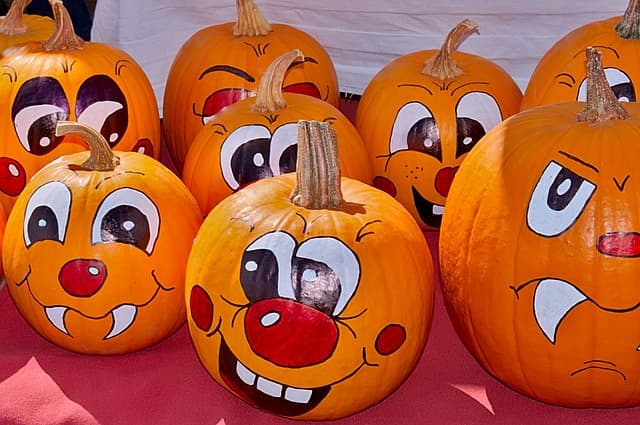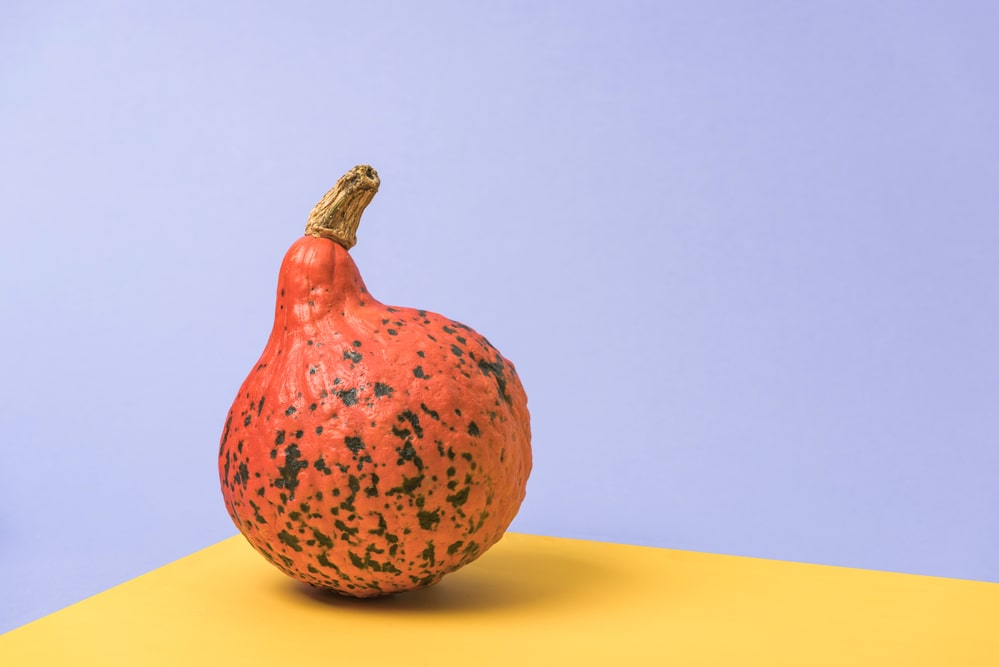Over the years, painting and beautifying pumpkins have become one of the most common things during the festivities and themed holidays. It is a quick way of sprucing up your home or property and making it inviting during festive holidays.
While you can purchase decorative pumpkins at the local supermarket, what if you want to do it yourself? Can you spray paint a pumpkin?
Stay tuned as this post will help answer these questions and take you through what you need to know and the step-by-step instructions on how to paint a pumpkin.
Can You Spray Paint a Pumpkin?
Yes, you can spray paint a pumpkin. You can use various types of paint when decorating a pumpkin. Whether you want to paint a natural or artificial pumpkin, be careful to choose a paint that will adhere to your pumpkin’s skin/surface.
Why do people decorate pumpkins?
Origin of decorative pumpkins
Stingy Jack tricks the evil one – No, not ‘the one whose name we shall not mention,’ the actual O.G. of evil, the devil. When Jack dies, the devil punishes him by giving him a lump of hot coal and sends him into the dark. Jack carves up a turnip and places the coal/soul inside it to light his path and wonders in the night, and he still does so to this day.
People started calling Jack, Jack with the Lantern, Jack of the Lantern, and later Jack O’ Lantern. Some believe that when immigrants moved to America, they resorted to using pumpkins instead of turnips. The practice caught on, and we still follow it hundreds of years later.
Various ways people decorate pumpkins
Apart from curving up Jack O’ Lanterns, people decorate pumpkins in other ways. One good example is spraying them.
Also, decorative pumpkins are nowadays incorporated into various cool celebrations. These include Halloween, Christmas, and Thanksgiving.
Different types of pumpkins that you can spray paint
There are different types of pumpkins that you can spray paint. However, note that they can all be classified into two main categories – real and faux pumpkins.
1. Real pumpkins
As the name suggests, these are the regular pumpkins we are all used to. Can you paint natural pumpkins? Yes, you can!
2. Faux pumpkins
Faux pumpkins go by different other names such as fake pumpkins, artificial pumpkins, etc. Unlike real pumpkins, these are artificially made using materials such as metallic, ceramic, plastic, resin, etc.

How to pick the right pumpkin to spray paint
If you plan on spray painting pumpkins, the first step is to pick the right pumpkin to work with. Depending on your needs and the time of outcome you are looking for, you can choose either one of the pumpkin types above or both.
Here are some of the things to consider.
Reusability and durability
If you want awesome and more durable decorative pumpkins, faux ones are much better.
Unlike real pumpkins, artificial ones use more durable materials like resin and plastic. Due to this, they last longer and can be reused over and over again. Of course, they will need a touch of paint now and then.
Type of paint you want to use
If you plan to use oil-based paint, faux pumpkins are a cool choice. This is because when you spray paint real pumpkins using oil-based paint, they cannot breathe, so there will be a build of gases inside them. This can lead to your pumpkin exploding.
Location of the decorated pumpkin
If you plan to place the painted pumpkin inside the house, then faux and real (especially mini pumpkins) can be an option. Just remember that with real pumpkins, you will have shorter durability than faux ones. You also have to be careful they do not mess up your home.
You can use faux and natural options if you plan to place them on your front pouch. However, a fake pumpkin is the way to go if you want an option that will last longer and withstand the elements.
Reducing food wastage
Yes, we know! You just came here to read about decorating pumpkins, and we are about to lecture on food wastage. Well, it is not a lecture but a reminder that when you paint a real pumpkin, you cannot then go ahead and consume it.
We should all be responsible for reducing food wastage, which will minimize garbage and is an excellent way to protect the environment. In this regard, faux or foam pumpkins are a better selection.
Types of paints commonly used on painted pumpkins
Various paints can be used to paint your pumpkin. Some of the most common ones are:
Acrylic paint: If you love crafts, then chances are that you have used acrylics before. They are versatile and can be used on different painting project ideas. The best acrylic paints are great for decorating items that are not handled frequently.
Spray paint: These come in different variations. Almost all types of paint have spray paints. Whether it is marine, acrylic, exterior, or even removable paint, there is bound to be a spray can option for the paint.
Chalk paint: This water-based paint option was invented by Annie Sloan. It is used in many ways, from decorative projects to making roads. Chalk paint requires little to no priming and can give your decorations a great rustic look or matte finish.
Paint markers: In most cases, paint markers are used for craft projects. The most common are acrylic paint markers. They can be a good choice for those looking for a more hands-on approach to tricking out pumpkins.
How to spray paint pumpkins
Supplies you will need include:
- The pumpkin.
- A rug to clean and wipe the pumpkin.
- Painter’s tape.
- The paint and primer (for the base coat if required).
- Drop rags.
- Paint sealer.
- Protective gear.
- Any other supplies, e.g. glitters for finishing touches.
Step-by-step instructions to spray paint pumpkins
Step 1: Cleaning and preparing
Whether using a metallic, faux, or real pumpkin, the first step is ensuring the surface is clean and dry. You may use a wet cloth to clean the pumpkin before wiping it with a dry one and letting it dry. I
n most cases, if the pumpkin’s surface is not dry, the moisture and wetness might act as a barrier and will cause the paint not to stick well to the surface.
Cleaning lets the paint adhere to the pumpkin skin and gives you a lovely finish. It also improves the durability of the coat of paint.
Step 2: Removing the stem
Okay, so there are various ways to go about this. The first one is where you remove the stem before painting and then glue it back on after you have completed the process. This is because you do not want the stem of your pumpkin to get painted while you spray paint.
Alternatively, you can use the painter’s tape to wrap the stem.
Removing the stem of a real pumpkin can be tricky, especially for mini pumpkins. In this case, wrapping the stem is more straightforward and uncomplicated. On the other hand, removing the stem of a faux pumpkin is much super easy, particularly for those that come with a screwable stem.
Step 3: The spray-painting process
Before you start this step, it is a great idea to protect yourself by wearing protective gear. Put on a respirator mask, disposable gloves, and goggles.
Priming
If you will prime the pumpkin, this is the right time to do so. We always consider this an essential step and will give you much better results for your finished pumpkin. A great idea is to always let the primer (base coat) dry off before you begin spray-paint.
Painting
While spray-painting, applying a thin coat of paint is vital. Thin coats of spray paint dry up faster than thicker coats. It also makes applying an even coat of paint easier across the pumpkin’s surface.
You should pay more attention to the pumpkin’s crevices and paint an even coat. You may also choose to make them shadowed or highlighted. This will make your painted pumpkin ‘pop out’ more when finished.
When you apply a coat of spray paint, you should wait for it to dry off before applying the next coat. This is especially the case when applying multiple coats. In most cases, you may have to do 2 or 3 coats to get the desired decor look.
Step 4: Finishing touches
If you want to add patterns and finishing touches, you can do so post the paintwork drying completely. Examples may include adding glitter, using different paint colors (such as orange and green, or other colorful shades) to create a fantastic variation, etc.
Please be careful not to scrape, dent, or damage the paint when applying finishing touches.
FAQs – Can you spray paint a pumpkin?
Why should I spray paint pumpkins?
Spray paint pumpkins are a common decoration during the festive seasons. You feel warm when you see a painted pumpkin during Thanksgiving or Christmas. During Halloween, furnishing pumpkins is one of the ways to create a themed decor in and outside your home.
What kind of spray paint will adhere to a pumpkin?
Most types of spray paints will stick to a pumpkin’s skin. Depending on whether you are using a faux or real pumpkin, always select the best spray paint for the type of surface of your pumpkin. Additionally, using a primer will help the paint adhere well.
What other ways can I decorate my Halloween pumpkins?
You can also use paint markers to trick out your Halloween pumpkin. Pinter markers can be a good option for adding artistic elements and shades (like red, orange, etc) to your pumpkin rather than painting the whole thing. You can also carve the pumpkin. You may also use glitter
Where is the best place to put my spray painted pumpkins?
Spray painted pumpkins can be placed all over the house. You can put them inside your home, especially as part of the festive decor on your Thanksgiving table and Christmas. Alternatively, you can place them on your front porch during Happy Halloween.
Will spray paint ruin a pumpkin?
It depends. If you are using a faux pumpkin, then no. However, if you use a real pumpkin, the answer is Yes. The coat of paint you apply will most likely cause the sprayed pumpkin not to breathe and start decomposing faster. The gas build-up inside can explode, destroying your spray painted pumpkin.
What is the best paint for decorating my pumpkins with my kids?
There are many things you should consider here. First, the paint should not be poisonous or contain minimal toxic compounds. Grab washable rather than permanent paint is also advisable, especially if your kids are very young. The primary idea here is ensuring your adorable child’s safety while you have fun painting/decorating thanksgiving and Halloween pumpkins.
Content Summary
Now that you know you can spray paint pumpkins, you can surely add them to your list of decorations for holidays and festivities. Decorating pumpkins can also be a straightforward project with your family or friends as you prepare amazing holiday decor around the house.
Please remember that when spray-painting a pumpkin:
- Choose the right paint, primer, and pumpkin.
- Wear protective gear whenever spray-painting anything.
- Clean the surface of the pumpkin before painting.
- You can mix and match different colors (common colors for decorative pumpkins are orange and green).
- Priming and sealing the paintwork will make the finished paint job look awesome and help improve its durability.
- Apply multiple thin coats for even coverage of the surface with the paint-wait for each coat to completely dry.
With the practical steps and information above, you should be a pumpkin spraying ‘Jedi.’ You should be glad that you will be able to take your sprayed pumpkin decorations to a whole new level during the holidays.

